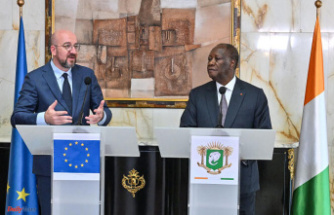The story of one thing is a stone side by side, "says Víctor Erice quoting Jorge Oteiza. A filmmaker stops in the work of a poet and sculptor, and from his meeting a film arises that is also what he calls a "cinematization," a book and, of passage, reinterpretation from the most intimate of a sculpture and of A unique and mythical landscape. All that, as if of a game of infinite reflections were dealt with, presented yesterday at the BBVA Foundation of Madrid. The story began at the end of 2019. Or perhaps many before. It was then when Erice taught a conference. The film director explained and explained himself in it a good part of what was achieved in stone and heaven, the video installation exhibited at the Bilbao Museum of Arts of Arts in which the monument at the top of Monte Agiña relears where Oteiza pays tribute to the composer and musicologist Father Donostia.
The path travel complies three stages. First, the funerary estela inaugurated in 1959 that coincides the prehistoric art with the supreme avant-garde in a sacred force at the exact crossing of Guipúzcoa with Navarre, between each of the two banks of the Bidasoa. Second, the videostalization of the filmmaker that in a dark room replicates the image of that stone sculpture on two screens confronted where the light is cited on one side, shadow to the other, night and day. And third, the book turned into an accurate and adjusted piece that collects the words of Erice about Oteiza and that, in its own way, close a circle not so much perfect and vertiginous. Indeed, a mirror that looks at a mirror is both an aberration and the beginning of infinity.
Erice that agreed to make the video installation that largely rhyme with his work correspondences in the company of Abbas Kiarostami 2005 for feeling that something owed to the poet. "Each one leads within himself the Opeiza that corresponds to him," she comments to clarify anything simply to give clues. She also says that although the book details how he did, rolled and exhibited, it does not make sense if he is not experienced. "If art does not become an experience for citizens, it greatly loses its dignity," he adds in an axiom that is worth as much for what he has occupied and for everything else.
Be that as it may, what maybe soon looks back into Madrid and Barcelona (it was promised in the act of yesterday) placed the viewer in a dark room with two screens. On the right, the day, where Erice tells the relationship of Opeiza's work with nature and history. "The work was a victim of an attempt to destruct and for those injuries in the stone runs history ... Oteiza himself was enthusiastic about contemplating the livelihood of vandalism convinced that the work was so much more beautiful." On the left, the night illuminated by the full moon that moves the monument to "a metaphysical space" necessarily new and deeper of loneliness and mystery.
Erice insists that he has never ceased to be a filmmaker, that is his way of seeing, feeling, if being. "What I have done is introducing the cinema experience in the museum. What happens is that the museum, as before me to filmmakers such as Scorsese, Bela Tarr, Apichatpong, Guerín or Isaki Lacuesta now offers a freedom that the film industry no longer offers », says and when you arrive here your reflection touches now The cinema marrow itself. "The Lumière brothers' experience remains as a residue the cinematographic room. The audiovisual experience, that not the cinema, is consumed in the tablets, on the mobile ... In the first 80 or 90 years since its creation, the viewer's place was exclusively in the cinema room, which amplifies the experience », Reflect, stop and follow: "The spectator has ceased to be a spectator to become a consumer. The cinema is originally a public experience. Now it is a domestic space. Now there is talk about people who use tools, which they consume, before what was about was to contemplate. Do not forget that the cinema began being a contemplative art ».
Be that as it may, and despite the tone that the transcribed words acquire, the ERICE is more diagnosed than I regret. "I do not doubt that they are still doing good films, but the experience has changed. Neither the films are made in the same way nor the support nor the conditions have nothing to do. Already at the end of the last century, it was talked about the death of cinema because in general the twentieth century is conditioned by the experience of the death of art. Oteiza spoke that art should die so that the new man can be reborn ». Pause. "It's hard to know where we're going because the audiovisual, which is no longer cinema, incorporates cinematographic language but also the advertising and television ... now the films are not born free and equal."
And said, which is the mirror of the mirror, the reflection of Oteiza in Erice and the two as a stone next to another.
Date Of Update: 24 November 2021, 22:05











